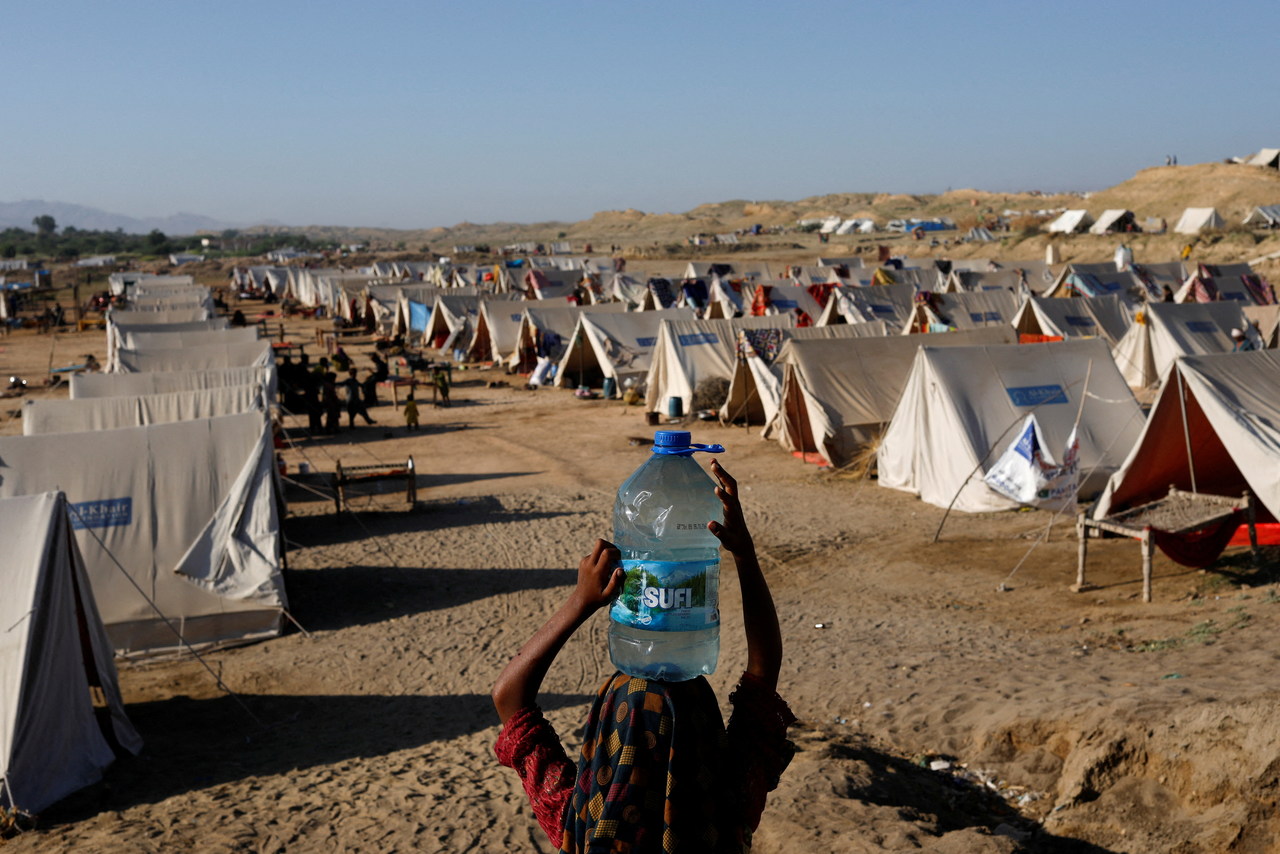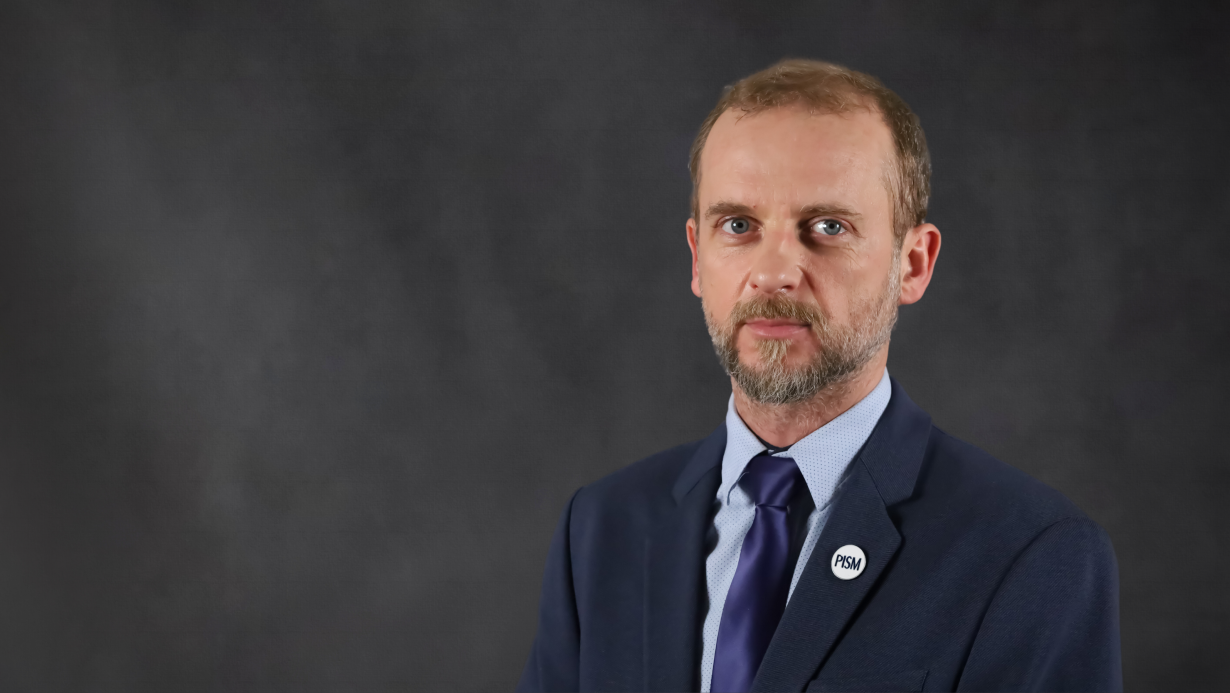EU Development Cooperation Policy Faces Challenges Amid the War in Ukraine
Russia’s aggression against Ukraine has caused a serious humanitarian crisis in Europe at a time when global aid needs are growing dramatically and are now at their highest in history. The EU’s strong support for Ukraine poses challenges to the EU development cooperation system and risks reducing the EU’s involvement in other developing countries. There is an urgent need to increase spending on EU development assistance, as well as to create new instruments and mechanisms. In this way, support for Ukraine will not limit the assistance needed for other countries, including strengthening their resistance to Russian influence.
 AKHTAR SOOMRO / Reuters / Forum
AKHTAR SOOMRO / Reuters / Forum
EU Aid to Ukraine
Since February this year, the European Union has allocated about €19.7 billion (€7.3 billion from the Member States and €12.4 billion from the EU institutions) in civilian aid and €3.1 billion in military aid to Ukraine. Only part of the amount transferred by EU institutions counts as official development assistance (ODA)—€485 million in humanitarian assistance, €330 million of the emergency package and a significant part of the €620 million in budget support. This is a much larger amount than the €620 million in ODA promised for Ukraine under the Multiannual Financial Framework (MFF) for 2021-2027.
The EU has vowed to continue to support and play a key role in rebuilding the country after the war. According to estimates by the World Bank, by July the costs in this area amounted to $349 billion, and in October the Ukrainian authorities gave the sum of $750 billion. The European Commission (EC) announces that in 2023 it will transfer €1.5 billion in macro-financial assistance to Ukraine every month (€18 billion in total) and mobilise additional funds for the reconstruction of the country. However, the protracted war will increase the needs of Ukraine even further.
Growing Global Aid Needs
The humanitarian situation in other parts of the world is deteriorating dramatically. The war in Ukraine, although crucial for the situation in Europe, is one of several dozen serious humanitarian crises in the world. The takeover of power by the Taliban in Afghanistan, wars in Yemen and Ethiopia, floods in Pakistan and South Sudan and other events mean that the number of refugees and internally displaced persons in 2022 exceeded 103 million, the highest number in history (an increase from 89 million in 2021). Rising food and energy prices, in addition to the economic effects of the COVID-19 pandemic, caused the number of hungry people to reach 828 million in 2021 (150 million more than in 2019), and according to the World Food Programme (WFP) as many as 345 million people face acute food insecurity in 2022 (an increase from 135 million in 2019). In December this year, the United Nations Office for the Coordination of Humanitarian Affairs (UN OCHA) estimated that a record 339 million people in 69 countries are in need of humanitarian assistance and protection, compared to 274 million in December last year, and twice as many as in December 2019, when it was 168 million people.
At the same time, the rising food and fuel prices deepens macroeconomic problems, including the debt of developing countries. This also results in a significant increase in the operating costs of humanitarian organisations like the WFP, which has seen expenses jump by $79 million per month, or 44% more than in 2019. The sum of all UN appeals for humanitarian aid for 2023 rocketed to $51,5 billion ($11 billion more than estimated for 2022). Through November, only 42% ($21 billion) of that need has been met, leaving a financial gap of about $30 billion. The situation is aggravated by the increasingly difficult economic situation in donor countries resulting from the twinned effects of the COVID-19 pandemic and inflation, which generates problems in increasing aid budgets.
Financing Problems
The EU is the world’s largest donor of development aid. In 2021, it allocated €70 billion (0.49% of EU GDP) for this purpose, which accounted for 43% of global ODA spending. The EU institutions, for which ODA is one of the main tools of external policy, spent €16.1 billion on it. The huge scale of the needs caused by the Russian aggression and aid for Ukraine is a strain on the existing system of development cooperation, which poses a risk of reducing support for other countries and in priority areas.
To 2027, the EU has allocated €79.5 billion in the MFF for development assistance to developing countries and €10.5 billion for humanitarian assistance. Under the new Neighbourhood, International and Development Cooperation Instrument (NDICI-Global Europe), €60 billion has been reserved for geographic priorities, €6.36 billion for thematic programs, and €3.18 billion for a rapid-response mechanism. In addition, a “cushion” of unallocated funds for unforeseen challenges and priorities of €9.53 billion has been established. It is intended to respond to unexpected crises, particularly in the Union’s neighbourhood. The increase in ODA for Ukraine was mainly possible thanks to the use of this “cushion” and the humanitarian aid budget.
However, the unprecedented scale of Ukraine’s needs limits the EU’s ability to respond flexibly and increase ODA to other parts of the world. Therefore, in order to finance the reconstruction of the country, the EU announced the creation of an additional, off-budget mechanism (Rebuild Ukraine Facility), whose funds are to come from the EU budget and voluntary contributions from Member States. While it is not possible to redirect funds between national envelopes allocated already to countries and regions under the NDICI, developing countries fear that aid to Ukraine will absorb most of the funds from the “cushion”, limiting support in response to crises in other parts of the world.
So far, the EU has promised about €2.5 billion to help fight hunger in developing countries, mainly in Africa, by 2024. The money comes from existing funds and unused funds from the previous MFF, which will not be available in the coming years. Financial constraints will also hinder the implementation of EU flagship projects, including Global Gateway, or horizontal programmes, such as those aiming to hit climate goals, which use NDICI grants to mobilise private funding.
In October this year, the European Commission proposed to increase expenditure on humanitarian assistance for the 2023 budget by €150 million from the planned €1.6 billion. This increase is insufficient according to members of the European Parliament and NGOs that have called for an additional minimum of €900 million. At the same time, there is a growing need for long-term development aid increasing the resilience of developing countries to external crises (food, energy, climate) for which NDICI is insufficient.
Conclusions
The war in Ukraine has proved the pertinence of creating a special “cushion” in the MFF to respond to unexpected situations. However, the unprecedented global aid needs have also highlighted the EU’s financial and institutional constraints in crisis-response and development assistance. The concentration of support for Ukraine, to the potential neglect of other crises, could negatively affect the perception of the EU by the countries of the Global South. When left without support, they will press for the war in Ukraine to end quickly, even under conditions unfavourable to Ukraine. Therefore, they might increase the pressure to suspend Western sanctions against Russia, for example, in their activity at the UN.
To counteract this, the EU and its Member States should significantly increase spending on development aid. At the same time, the growing economic problems in the EU give rise to the need to search for new sources of financing and to create instruments outside the NDICI budget. A possible way is to reconsider the solution proposed by the EC and rejected by the European Council in 2020 to increase the NDICI budget by €15 billion (development aid by €10 billion and humanitarian aid by €5 billion) from the NextGenerationEU recovery fund. The EU may also propose to create, together with the Member States acting as Team Europe, an off-budget trust fund (similar to those established in 2015 to combat the causes of migration) to finance humanitarian aid. Another option would be for the EU to take the initiative to reduce or write off the debt of the least-developed countries, which could put pressure on other actors, such as China, to do the same. EU members could also donate part of their so-called special drawing rights (SDR) under the IMF to poorest countries. It is also worth considering (already proposed in 2019) the creation of a European Bank for Climate and Sustainable Development, which would help mobilise financing for green and sustainable investments in the world.
Increasing the capacity to support developing countries would not only be a response to humanitarian needs and an expression of solidarity but also is in the strategic interests of the EU in its confrontation with Russia. It would help the EU’s partners deal with the effects of Russia’s aggression against Ukraine, which is affecting the economies and societies of developing countries. At the same time, it would increase their resistance to Russian influence and it will show that EU support for Ukraine is not at the expense of the countries of the Global South.


